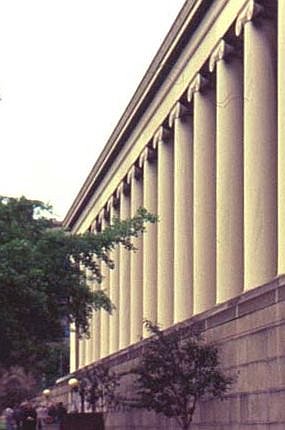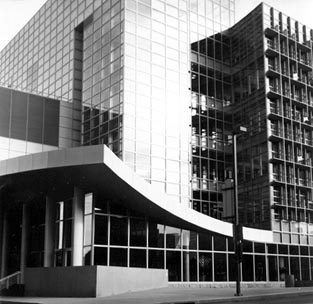
The Alcoa headquarters on the North Shore, which one might describe as a modernist-revival building.

The Alcoa headquarters on the North Shore, which one might describe as a modernist-revival building.
This article, by far the most popular one Father Pitt has ever published, continues to accumulate pictures. Some of them are large by Internet standards: if you click on a large picture, in most browsers it will be sized to fit your browser window.
Mr. Alan Veeck writes:
I have a group of friends who want to visit “The Ten Most Beautiful Catholic Churches in Pittsburgh” for Mass (I likely have seen the top ten UGLIEST Catholic Churches… Pittsburgh, as I understand it, is something of a “center” for this sort of thing) but I was wondering what your take was on the Top Ten list?
Father Pitt, after lifting his wig and scratching his head for a bit, came up with this list, which is in no particular order:
1. Sacred Heart, Shady Avenue, Shadyside. The door of this church is a portal to an alternate universe where beauty and devotion reign in tandem.
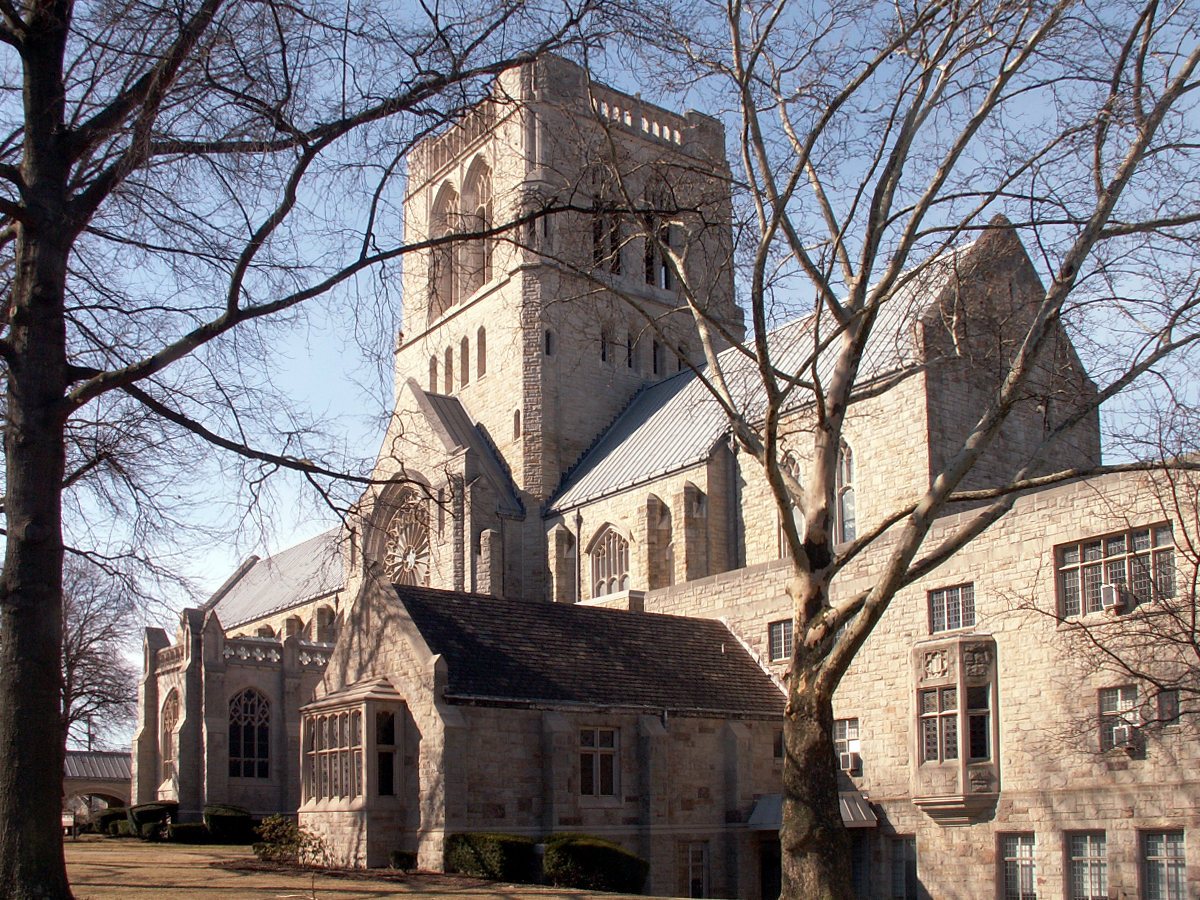
2. St Paul’s Cathedral, Fifth Avenue, Oakland. It gets better as it ages: like any great cathedral, it grows organically, adding chapels and decorations as the years go by. After a century, it’s only getting started. The grounds and matching outbuildings (notably Synod Hall) add to the impression of a great European cathedral. Besides all that, the organ is one of the best in the city.

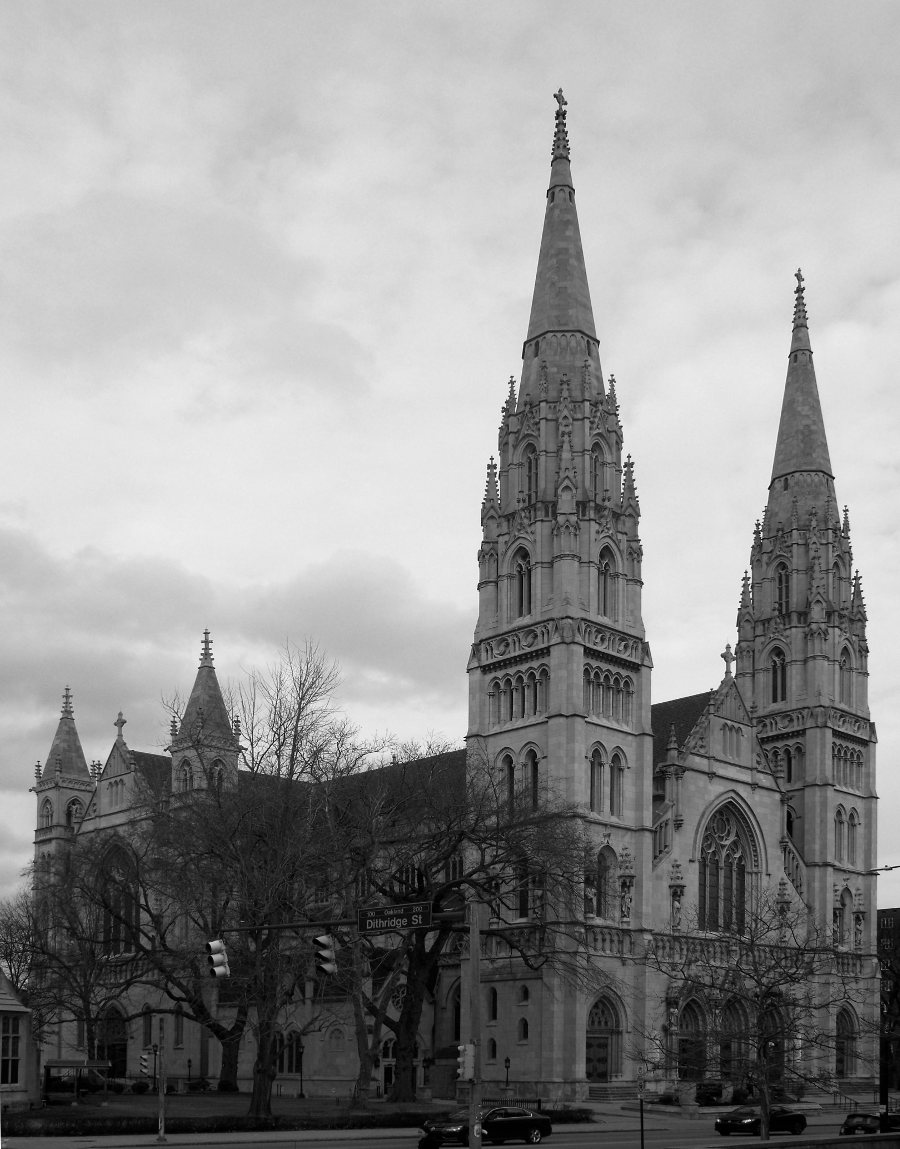
3. Immaculate Heart of Mary, Polish Hill. Built by Polish railroad workers in their meager leisure hours, it dominates its neighborhood with its huge green dome, just the way it should.
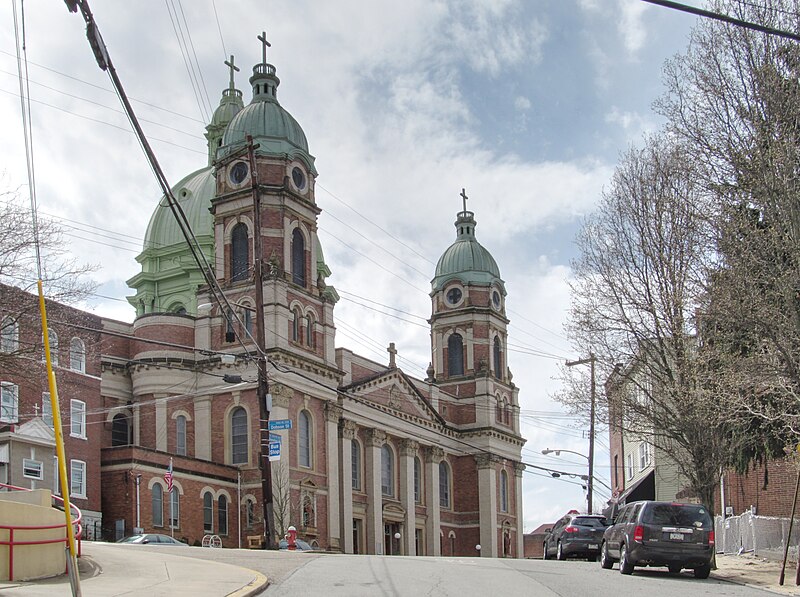


4. St. Stanislaus Kostka, 21st Street, Strip. The interior is full of rich dark wood and beautiful stained-glass Polish saints. The location is also spectacular: the rose window faces a broad plaza that’s the center of the wholesale produce business in Pittsburgh.


5. St. Nicholas, Millvale. The church is dignified but unassuming on the outside; inside, however, its extraordinary murals (which make a strong metaphorical connection between the horrors of war and the horrors of industry) are some of Pittsburgh’s greatest artistic treasures.
6. Holy Rosary, Homewood. Designed by Ralph Adams Cram, so no more needs to be said.



7. St. Boniface, East Street, North Side. The Parkway North swerved to avoid this masterpiece, but destroyed the neighborhood that kept it alive. Now home of the officially approved non-schismatic Latin Mass community in Pittsburgh.


8. Epiphany, Lower Hill. For a short time, between the demolition of the old St, Paul’s downtown and the opening of the current St. Paul’s in Oakland, this church served as the cathedral for the Diocese of Pittsburgh. Its enormous rose window in the west front is distinctive.
9. St. John the Baptist Ukrainian, East Carson Street, South Side. The gilded domes (which used to be bright blue) feature in many postcard views of Pittsburgh.
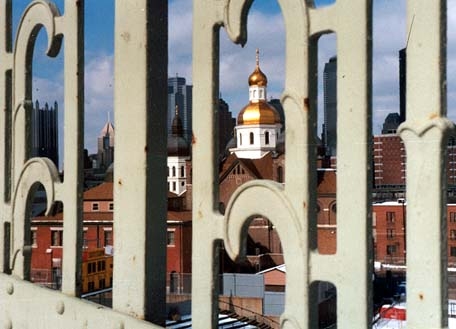



10. St. Bernard, Washington Road, Mount Lebanon. St. Bernard’s church presides over a whole matching medieval village of warm honey-colored stone and brightly colored roof tiles. It’s a rich congregation that has produced its own gloriously illustrated coffee-table book about the building.

St. Anthony Chapel in Troy Hill should also be mentioned; with the biggest collection of relics outside the Vatican, it’s a world-class pilgrimage site.
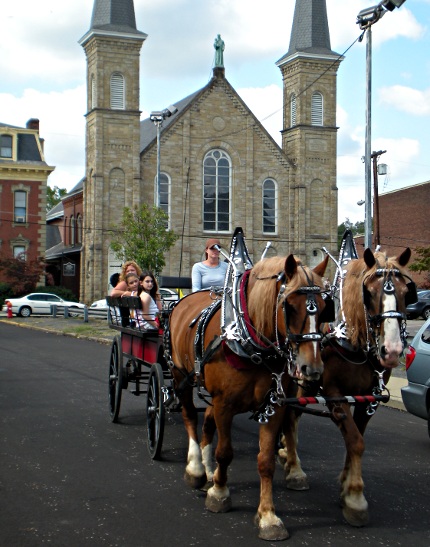
Mike Aquilina, the well-known Catholic writer, has mentioned that he thinks St. Patrick in the Strip should be added. The building is small and undistinguished on the outside, but the statuary garden (with statues of American saints and heroes of the faith) is something special, and the Sacra Scala, a stairway that must be ascended on the knees in prayer, is an experience worth coming for.
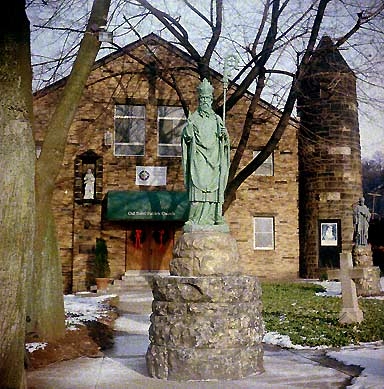
Of course, by restricting the list to Roman Catholic churches, we miss some of the most striking church buildings in Pittsburgh. A very incomplete supplementary list:
Trinity Episcopal Cathedral, downtown


First Presbyterian, downtown (worth seeing for its Tiffany glass)


First English Lutheran, downtown

East Liberty Presbyterian

Calvary Episcopal, Shadyside

First Methodist, Shadyside
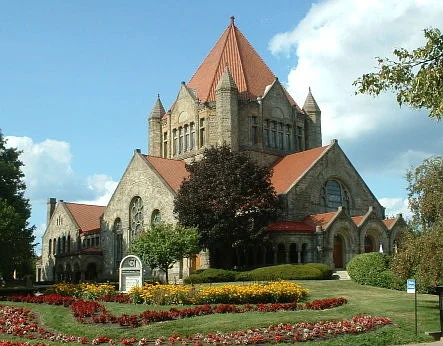
Calvary United Methodist, Allegheny West (famous for its Tiffany glass, some of the best work ever to come out of Tiffany’s studio)

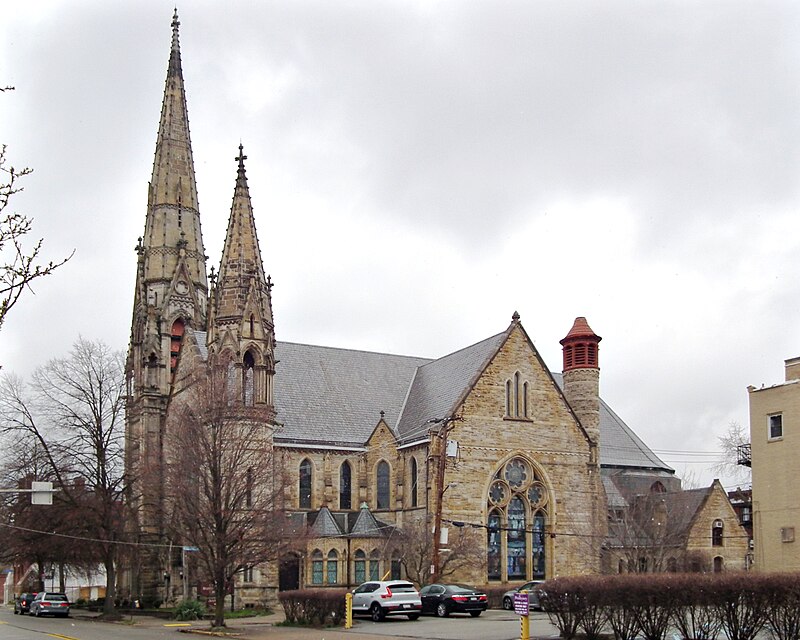
Emmanuel Episcopal, Allegheny West


First Baptist, Oakland

Heinz Chapel, Oakland



St. Nicholas Russian Orthodox, McKees Rocks Bottoms

Shadyside Presbyterian

Old St. Luke’s, Woodville, Scott Township
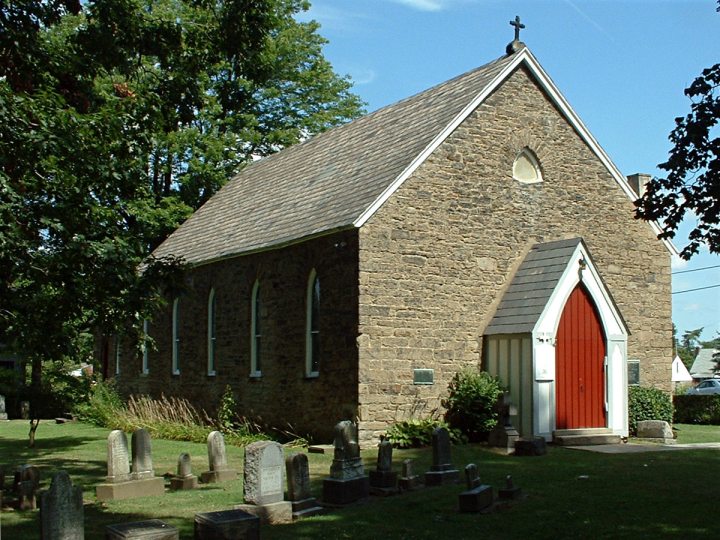
Rodef Shalom synagogue, Oakland (not strictly a church, but one of our most striking religious buildings)

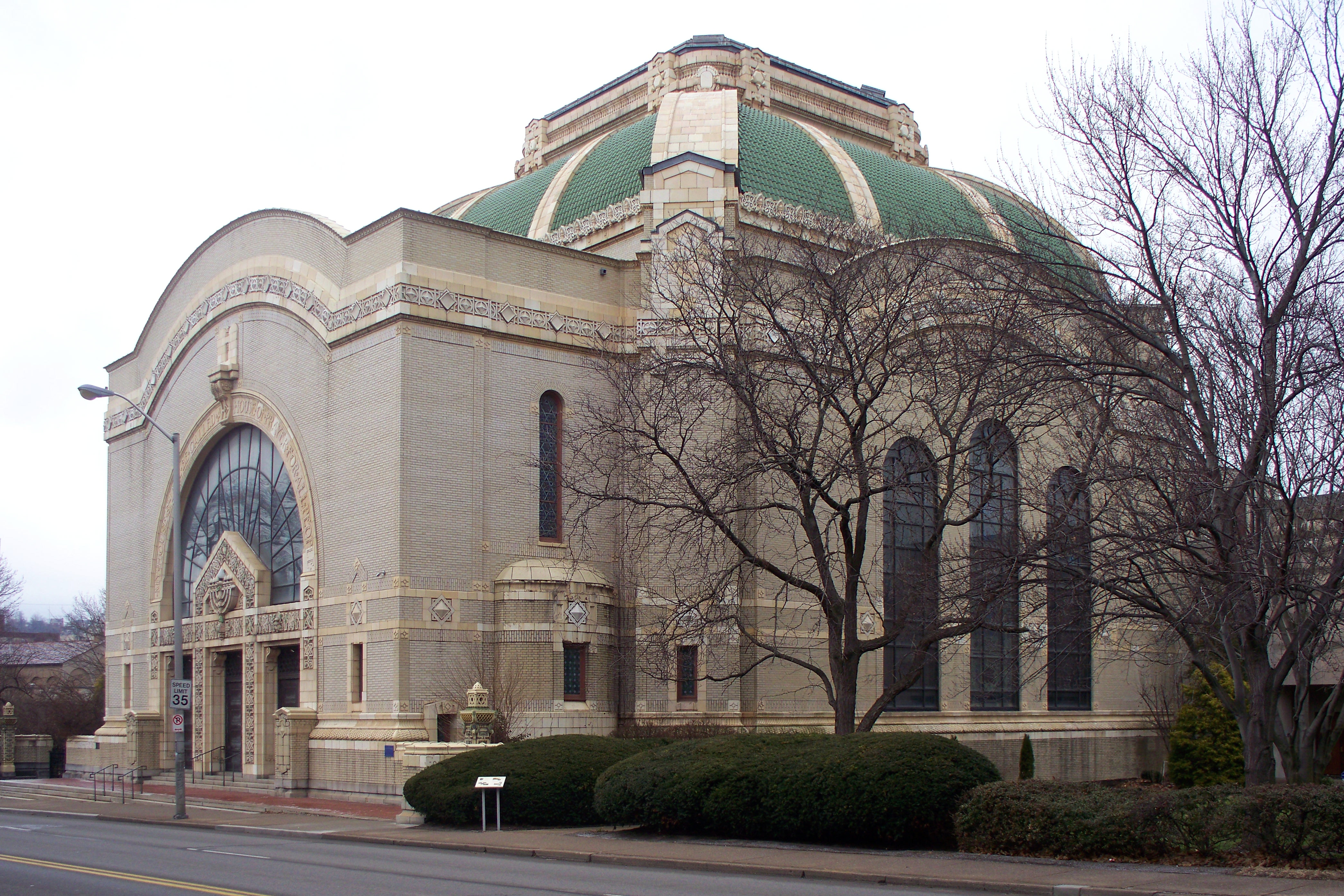
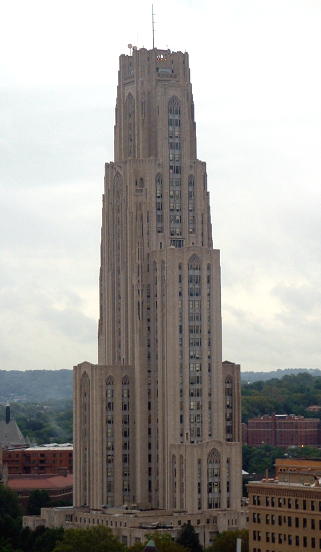
A view of the Cathedral of Learning from Presbyterian Hospital. All the old dirt has been cleaned off, and the grand old lady looks new again. It’s impressive from any angle, but especially so from the west, where the carefully orchestrated symphony of setbacks dominates but does not intimidate the whole university district.
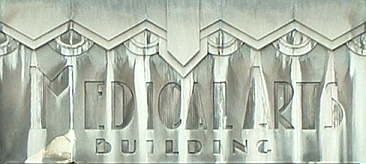
The Medical Arts Building in Oakland is about as far into Art Deco as a respectable medical establishment would dare go. The entrance is particularly bold, with its broad expanse of glass revealing gorgeous chandeliers within, and a stone inscription (a bit blackened from decades of industrial soot) that belongs in a Pandro S. Berman production.
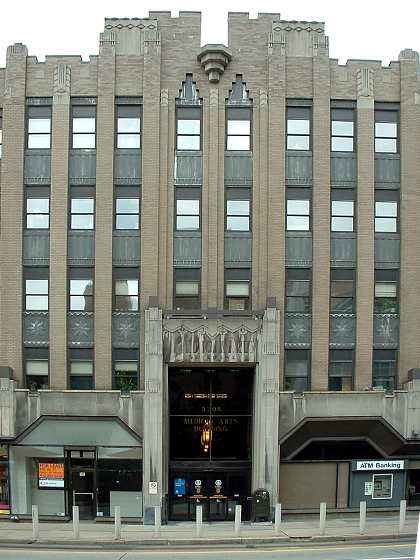


Henry Clay Frick specified that the William Penn should be the best hotel in America, so the best hotel was what he got. The building itself is notable for its restrained elegance; inside, it was the first hotel in the United States with a private bath in every room. At first glance it seems almost severely plain, but step back a block or so and the harmony of the proportions becomes more obvious. The ornament, too, is neither lavish nor gaudy, but simply in the very best taste. Nearly a century after it was built, the William Penn remains Pittsburgh’s most famous and most elegant hotel.

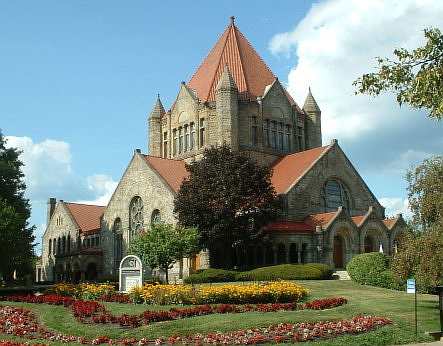
First United Methodist Church sits where Shadyside, East Liberty, Friendship, and Bloomfield all meet. It would be hard for a building to get much more Richardsonian without having been designed by Henry Hobson Richardson himself.
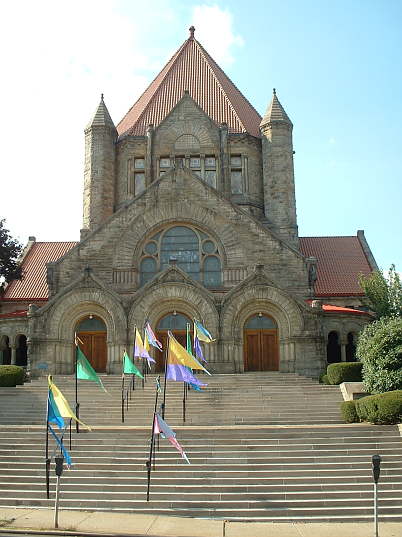
Just a quick walk up one block of Liberty Avenue, from the Wood Street subway station to the EBA busway stop.

Downtown Pittsburgh is built on a tiny triangle of land at the junction of two rivers. In the latter 1700s, when the town was laid out, rational town planning was very fashionable, and the grid was the ideal. The only way to lay a grid in a triangle, however, was to make it two colliding grids at different angles, and Liberty Avenue is where the collision occurs. The southeastern side of Liberty Avenue is lined with buildings in all sorts of odd shapes, especially triangles.


Here are two classic Victorian commercial buildings, one updated with a bit of postmodernist frippery on top. Would you care to buy it? It certainly has a lot of natural light from those windows.

A short stroll in the snow through an enchanted landscape filled with fantastic temples, angels, and cold beauties with warm hearts.



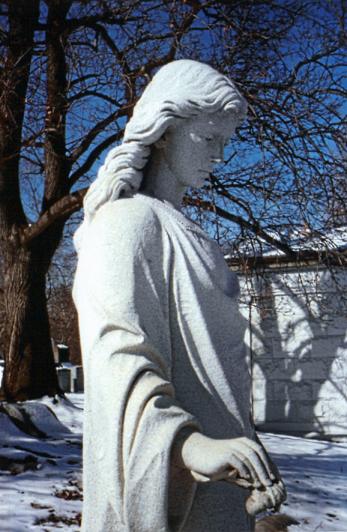
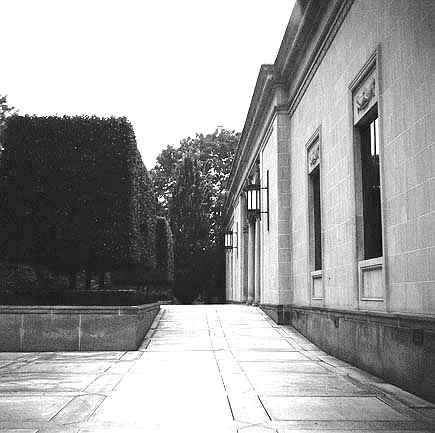
The Frick Art Museum in Point Breeze was built as a home for Helen Clay Frick’s art collection. It’s a small collection, but chosen with good taste–a Boucher here, a Reynolds there, and a roomful of priceless medieval religious art. The building itself is less than forty years old, but the timeless design could easily have been a Renaissance palace.
